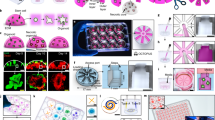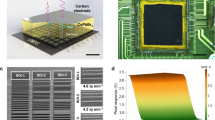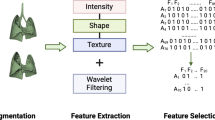Abstract
TRANSPLANTATION and parabiotic experiments have shown that, in irradiated embryos of vertebrates, direct damage to organ rudiments is primarily responsible for developmental abnormalities1–4. Although the irradiated environment per se does not adversely influence the development of normal organ transplants, it does seem to enhance the damage in irradiated organ primordia5,6. We have carried out similar experiments in housefly pupae and observed that normal imaginal disks transplanted in irradiated pupae developed poorly. Besides, the epidermis of the irradiated host inhibited the development of transplants when they were in contact with each other.
This is a preview of subscription content, access via your institution
Access options
Subscribe to this journal
Receive 51 print issues and online access
$199.00 per year
only $3.90 per issue
Buy this article
- Purchase on SpringerLink
- Instant access to full article PDF
Prices may be subject to local taxes which are calculated during checkout
Similar content being viewed by others
References
Butler, E. G., Anat. Rec., 62, 295 (1935).
Piatt, J., and Raventos, A., J. Exp. Zool., 124, 167 (1953).
Piatt, J., and Kusner, D. B., J. Exp. Zool., 144, 61 (1960).
Rugh, R., and Van Dyke, R. H., J. Exp. Zool., 149, 217 (1962).
Schneller, M. B., J. Morphol., 89, 367 (1951).
Piatt, J., J. Exp. Zool., 156, 331 (1964).
Nair, K. K., Bhaskaran, G., and Sivasubramanian, P., Canad. Ent., 99, 597 (1967).
Author information
Authors and Affiliations
Rights and permissions
About this article
Cite this article
BHASKARAN, G., SIVASUBRAMANIAN, P. Development of Transplanted Imaginal Disks in X-irradiated Housefly Pupae. Nature 222, 786–787 (1969). https://doi.org/10.1038/222786a0
Received:
Issue date:
DOI: https://doi.org/10.1038/222786a0



